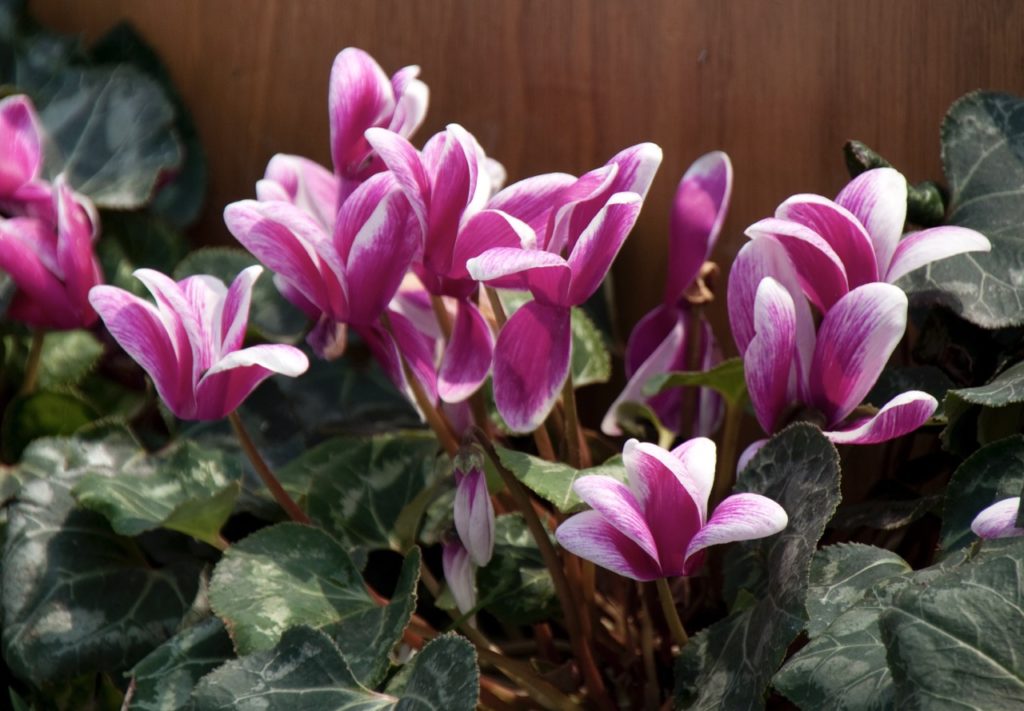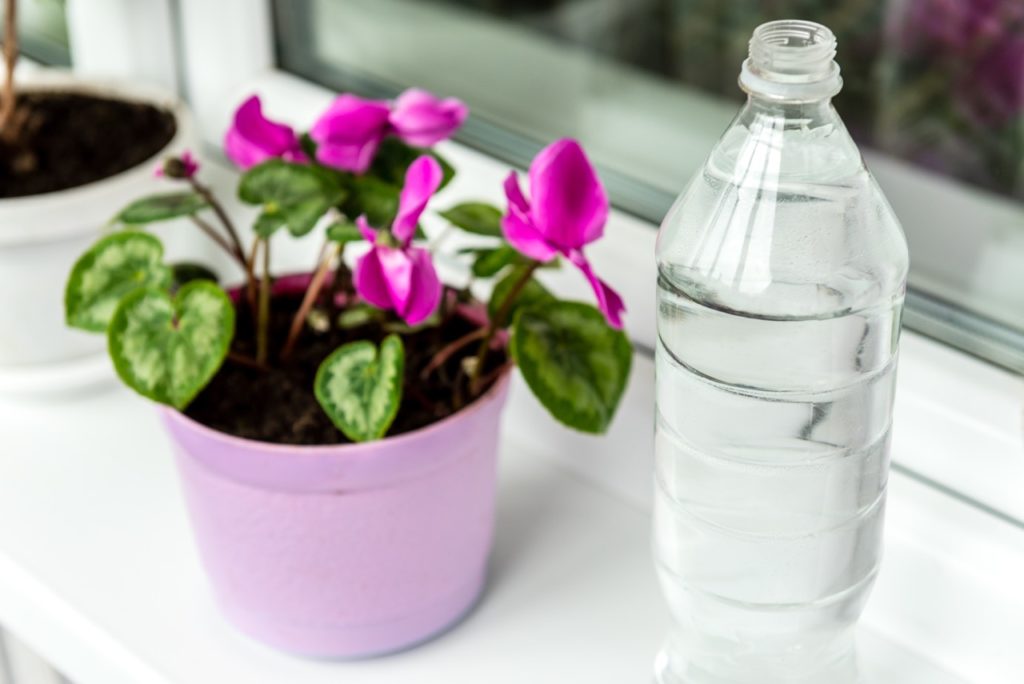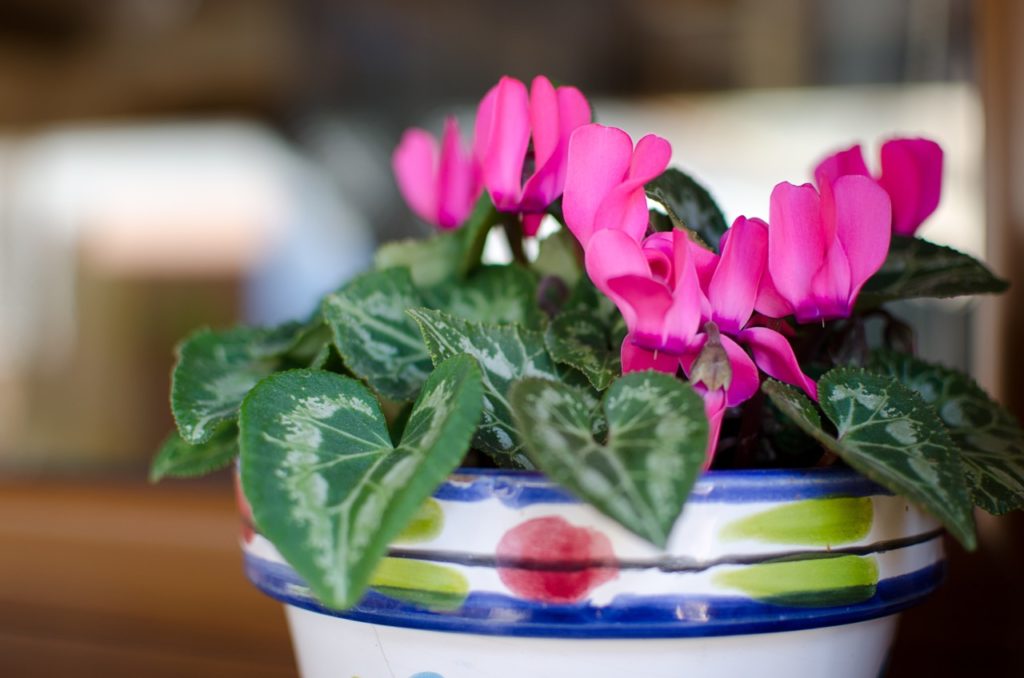7 Important Tips To Help Grow Tender Cyclamen As Houseplants Indoors

PERENNIALS > CYCLAMEN > INDOORS

Elizabeth is a Permaculture Garden Designer, Sustainability Consultant and Professional Writer, working as an advocate for positive change. She graduated from the University of St. Andrews with an MA in English and Philosophy and obtained a Diploma in Applied Permaculture Design from the Permaculture Association.
Reviewed By COLIN SKELLY

Colin is a Horticulturist and Horticultural Consultant with experience in a range of practical and managerial roles across heritage, commercial and public horticulture. He holds the Royal Horticultural Society’s Master of Horticulture award and has a particular interest in horticultural ecology and naturalistic planting for habitat and climate resilience.
IN THIS GUIDE
CYCLAMEN GUIDES
Common Problems
Container Growing
Growing From Seed
Indoors Care
Overwintering
Propagation
Red Varieties
Transplanting
Tender cyclamen cannot usually cope with outdoor conditions in the UK, but they can make great houseplants if you care for them correctly.
Tender cyclamen are grown as houseplants over the autumn and winter months, then placed outside or in a cool, dry spot until they start to grow once more.
To grow and care for cyclamen indoors, there are a number of simple steps that you must follow:
- Choose a suitable cyclamen to grow as a houseplant.
- Pot up your cyclamen in an appropriate container.
- Place your cyclamen in a suitable spot.
- Water your cyclamen correctly, following a strict routine.
- Feed sparingly with a suitable organic feed.
- Gently tug away dead flowers or leaves.
- Move the plant to a cool spot over summer to get it to re-flower.
Read on for a more detailed explanation of each of these steps:
1) Choose Your Cyclamen
The most important thing to remember if you wish to grow cyclamen as a houseplant indoors is that only certain species will be suitable for this type of treatment.
Most commonly, when growing cyclamen indoors, you will be growing a cultivar of C. persicum.
“Cyclamen persicum originates from rocky slopes in North Africa and the Eastern Mediterranean,” says Colin Skelly, a Horticulturist with 15 years of experience in the industry.

“These are the conditions that you are trying to replicate – free draining and warm but not hot.
In spring and summer, they enter dormancy due to the hot-dry conditions they evolved to deal with before reemerging and flowering into winter as cooler conditions return.”
There is a range of options with different bloom colours to choose from.
2) Pot Up Your Plant
Most commonly, cyclamens will be purchased as potted plants, though these plants can also be planted as tubers, or grown from seed.
When the plant arrives or has grown large enough to handle, pot it up into an individual container, filled with loam or soil-based multi-purpose compost mixed with grit and leaf mould for best results.

These plants like fertile and free-draining growing mediums.
Make sure that the pot has adequate drainage and that the top of the tuber sits just above the surface of the growing medium.
Be gentle when potting up to disturb the roots as little as possible.
3) Place In A Suitable Spot
You need to place indoor cyclamen in a cool, bright spot out of direct sunlight.
Ideally, a cool room with temperatures of between 10-15°C should be chosen.
Make sure that you do not place your cyclamen where it will be too warm or it may stop flowering and enter dormancy too early.
4) Water Sparingly
When watering cyclamen grown as a houseplant, it is important to make sure that you do not over-water, and that excess water is able to drain away freely.
It can be beneficial to water from below so that you do not wet the leaves.

Stand the cyclamen in a shallow container of water for an hour or so, then when the medium is moist but not saturated, let excess water drain away.
Water during the active growth and flowering period whenever the medium begins to feel dry, but in the dormant period, stop watering when the leaves turn yellow in spring.
5) Feed During Active Growing Season
Cyclamen do not need much feeding, as excess feeding can cause problems with foliage growth at the expense of flowers.
However, to keep cyclamen going as a houseplant over multiple years, feed every couple of months over the active growing and flowering period with an organic feed suited to use with houseplants.
6) Remove Dead Foliage
To keep your houseplant looking good, remove dead flowers or leaves with a gentle tugging motion.

Just remember to leave the flowers to mature and produce seeds if you wish to try propagating your plant.
However, this is a somewhat challenging job which can require patience, so is perhaps not the best job for beginners.
7) Move To A Cool Spot
In spring, the leaves of cyclamen are meant to turn yellow.
This is the beginning of the dormancy phase which is a part of the plant’s life cycle.
Once this occurs, place the cyclamen somewhere cool and dry – a sheltered and shaded spot outdoors is ideal.

The compost should be kept moist, so if you live in a wet area, consider laying the pot on its side to prevent waterlogging due to excess rainfall.
In September, your cyclamen should begin to grow again, and you can bring it back indoors, resuming watering as soon as you see new growth.
